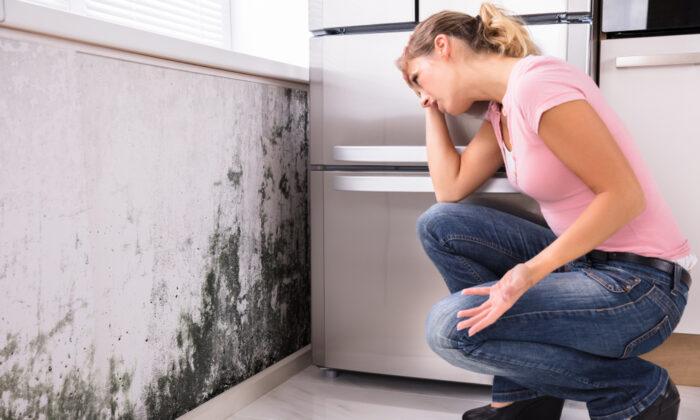Mold. It grows on bathroom walls, it makes basements smell bad, and it ruins perfectly good loaves of bread. And if you’re allergic to it, there’s a good chance that mold will add to your misery.
The spores from common molds function much like the pollen from ragweed. If you inhale the spores, you could get a case of allergic rhinitis, otherwise known as hay fever -- an unpleasant combination of runny nose, sneezing, watery eyes, itching, congestion and coughing. And if you have asthma, the spores may trigger attacks. More than 80 types of mold have been associated with lung, nose, and throat problems, according to the American College of Allergy, Asthma, and Immunology (ACAAI). It’s possible that mold may even lead to the development of asthma.
Fortunately, only about 25 percent of people with allergies are allergic to mold, according to the American College of Occupational and Environmental Medicine (ACOEM). The organization estimates that 10 percent of Americans are allergic to mold, and for about half of them, the allergy may result in an actual illness. The good news is that you can reduce your exposure to mold with a few simple steps.
Mold is a type of fungus, a diverse kingdom that also includes mushrooms and yeasts. Unlike plants, molds and other fungi feed on organic material, whether it’s a rotting tree or a carpet in your basement, by breaking them down and absorbing their nutrients.
Mold thrives in warm, moist environments. The air can be full of it in warm summer months, often causing seasonal cases of hay fever. In the South, where it’s warm and humid enough for mold to live all year long, allergies to outdoor molds can be a constant nuisance.
Molds can live indoors, too. They’ve even been found in subfreezing temperatures: The only thing they need is oxygen, something to feed on, and moisture. A damp basement is the classic hot spot. Mold can also thrive on carpets in other moist places, such as basements, closets, and bathrooms. Other potential moldy places include tubs, shower stalls, air conditioners, humidifiers, garbage cans, mattresses, and upholstered furniture.
Your doctor can give you a test to see if you’re sensitive to mold, but the test isn’t exactly foolproof. For one thing, doctors don’t have samples for every common type of mold. (Molds can be surprisingly hard to grow in a lab). In most cases, however, you can find out with reasonable certainty if you have anything to fear from mold.
The best treatment for mold allergies is avoiding mold in the first place. But if you live in a place where mold is unavoidable, your doctor can offer additional help. You may need an antihistamine medication to control your symptoms. In severe cases, your doctor may prescribe a series of allergy shots to help reduce your sensitivity to mold.
Even if you aren’t sensitive to mold, you don’t want it to take over your house. Not only is it unattractive, but it can start to smell if left unchecked. If you happen to see a patch of mold growing in your bathroom or anywhere else in your house, you can quickly kill it with a dilute bleach solution or any other product that is specifically intended to treat mold or mildew.
There are also extra steps you can take to keep mold under control. Wash your bathroom once a month with a dilute bleach solution or another mold-killing cleaner, whether you see any mold or not. Cut down moisture in the bathroom by turning on an exhaust fan and opening a window after a shower. If you live in a humid climate, use an air conditioner or a dehumidifier to keep the humidity at no more than 50 percent. A recent ACAAI report also suggests sealing all leaks to prevent water accumulation, using a sump pump in basements to avoid flooding; and using an exhaust fan to ventilate the kitchen while cooking.
To prevent mold from taking hold, your kitchen and bathroom should be well ventilated. If possible, get rid of carpets in your basement or bathrooms. If a carpet or upholstery gets soaked, have it removed or replaced immediately.





